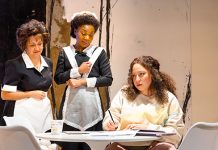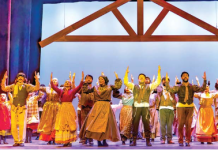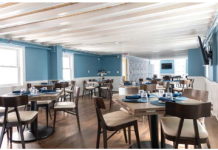By LInda McK.Stewart
February 19, 1942, Executive Order No. 9066 is signed by Franklin D. Roosevelt. It was 75 days after “the date which will live in infamy.”
All of America was still reeling under the shock of the Japanese air strikes on our naval base at Pearl Harbor. Order No. 9066 decreed that all Japanese-Americans residing in the U.S. were, for the duration of the war, to be placed under U.S. military surveillance. By the end of 1942 an archipelago of hastily constructed internment camps, scattered through half a dozen western states, housed some 120,000 men, women and children of Japanese affiliation. Of these, 70 percent were U.S. citizens. Their homes, shops, their next-door neighbors, their schools and churches, their pets and their gardens … all hastily abandoned. No time to give away, to rent or to sell. It was now and at once and only what you can carry. So many lives interrupted. So many aspirations wiped out. So many children whose early impressions were an amalgam of desolation and parental angst.

Now, so many years later, few of us – even with the best of intentions – can conjure up the bewilderment and anxiety those internees must have experienced. In downtown Los Angeles, the area known as Little Tokyo, the Japanese American Museum that opened in 1995 has mounted a modest but eloquent display that does just that. Black-and-white 1942 photographs capture neatly dressed, multigenerational families seated amidst their bundles and suitcases at designated assembly points, patiently awaiting the buses that would transport them to the camps where they would live for the duration of the war. A portion of one such camp has been reconstructed on the museum’s second floor. Its splintery boards, flimsily lined with tar paper, fenced in behind barbed wire, provides eloquent witness to the misery of internment. Barracks 120 feet long, 20 feet wide, stood row on row in Wyoming, Oklahoma, Utah, the Dakotas and Arizona. Summer meant scorching sun, dust and no shade. Winter meant icy winds, waist-deep snows and, in each barracks, one small wood-burning stove for indoor warmth.
The museum receives a constant parade of schoolchildren. Many are grandchildren of internees yet here they learn about the wartime internment for the very first time. They gaze wide-eyed at a diorama of the camps, struggling to grasp what it must have been like to spend three bleak years under such harsh conditions. On August 10, 1988, President Reagan signed the Civil Liberties Act which provided that each survivor or eligible heir receive $20,000, tax-exempt, plus an official letter of apology, signed by the president.
 The wartime experience of the Japanese Americans is only one part of the museum’s exhibits. No less engrossing are the memorabilia that document the immigrant experience beginning in the 1850s when the first wave of aspiring Japanese landed in California. America was called “Gum Saan” or Gold Mountain. With few exceptions they were met with resentment and outright hostility. Local miners, fishermen and farmers resented the newcomers. Vigilantes sowed terror in Japanese encampments. The Hearst papers warned the public in glaring headlines that the waves of Japanese immigrants constituted grave threats to national security. The newcomers were forbidden to own land. As laborers they were paid a fraction of their U.S. counterparts’ wages. A number of poems, penned in the 19th century and constructed in traditional Japanese style have survived. They make for poignant reading in the museum’s glass-enclosed cases:
The wartime experience of the Japanese Americans is only one part of the museum’s exhibits. No less engrossing are the memorabilia that document the immigrant experience beginning in the 1850s when the first wave of aspiring Japanese landed in California. America was called “Gum Saan” or Gold Mountain. With few exceptions they were met with resentment and outright hostility. Local miners, fishermen and farmers resented the newcomers. Vigilantes sowed terror in Japanese encampments. The Hearst papers warned the public in glaring headlines that the waves of Japanese immigrants constituted grave threats to national security. The newcomers were forbidden to own land. As laborers they were paid a fraction of their U.S. counterparts’ wages. A number of poems, penned in the 19th century and constructed in traditional Japanese style have survived. They make for poignant reading in the museum’s glass-enclosed cases:
“Illusion and I/
Traveled over the ocean/
Hunting money trees./
Kijo”
“Day of spacious dreams!/
I sailed for America/ Overblown with hope./ Ichiyo”
“Family fortunes/
Fall into the wicker trunk/
I carry abroad.”
But adversity only strengthened their resolve. Barred from many economic avenues, Japanese entrepreneurs cooperated with each other and within a generation had established a firm foothold in California’s economy. As proof of their success in their adopted land, families posed for formal photographs to be sent back to the homeland: proud parents in their Sunday best with dressed-to-the-nines children upon parental knees.
Framed and hung above one display case is a letter that sums up the pride and determination better than newspapers or history books that so characterized the Japanese diaspora to America. Written in 1852 and addressed to the governor of California, it reads in part, “… when your nation was a wilderness … we exercised most of the arts and virtues of civilized life. We are not the degraded race you would make us. Signed Normas Asing.”
For the casual visitor the Japanese American Museum offers a wealth of bilingual trivia: For example, issei denotes a first generation Japanese immigrant to the U.S.; nissei is 2nd generation; sansei is 3rd generation; yousei is 4th generation; gosei is 5th generation. Kiberi Nisei is someone of any generation who was educated in Japan and nikkei means Japanese American.
The Japanese American Museum at 100 North Central Ave. is fortuitously located in an area that abounds with wonderful Japanese shops and some of the best restaurants to be found in all of California. Prices, compared to non-Asiatic restaurants and retail outlets, are consistently lower. Be prepared for a brand of quietly courteous service that seems elsewhere to be disappearing at an alarming rate.
IF YOU GO: For museum visiting hours and facilities call 213-625-0414.














